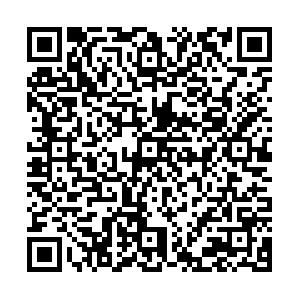|
[1]
|
Fiedler T,Rabe M,Mundkowski R G,et al. Adipose-derived mesenchymal stem cells release microvesicles with procoagulant activity[J]. Int J Biochem Cell Biol,2018,100(1):49-53.
|
|
[2]
|
Kishimoto N,Honda Y,Momota Y,et al. Dedifferentiated Fat (DFAT) cells: a cell source for oral and maxillofacial tissue engineering[J]. Oral Dis,2018,24(7):1161-1167. doi: 10.1111/odi.12832
|
|
[3]
|
Buduru Smaranda Dana,Gulei Diana,Zimta Alina-Andreea,et al. The potential of different origin stem cells in modulating oral bone regeneration processes[J]. Cells,2019,8(1):29. doi: 10.3390/cells8010029
|
|
[4]
|
Ansari Sahar,Seagroves Jackson T,Chen Chider,et al. Dental and orofacial mesenchymal stem cells in craniofacial regeneration: The prosthodontist’s point of view[J]. Journal of Prosthetic Dentistry,2017,118(4):455-461. doi: 10.1016/j.prosdent.2016.11.021
|
|
[5]
|
Hu Lifang,Yin Chong,Zhao Fan,et al. Mesenchymal stem cells:Cell fate decision to osteoblast or adipocyte and application in osteoporosis treatment[J]. International Journal of Molecular Sciences,2018,19(2):360.
|
|
[6]
|
Nemeth K,Mezey E. Bone marrow stromal cells as immunomodulators. A primer for dermatologists[J]. J Dermatol Sci,2015,77(1):11-20. doi: 10.1016/j.jdermsci.2014.10.004
|
|
[7]
|
Deak E,Seifried E,Henschler R. Homing pathways of mesenchymal stromal cells (MSCs) and their role in clinical applications[J]. International Reviews of Immunology,2010,29(5):514-529. doi: 10.3109/08830185.2010.498931
|
|
[8]
|
Blanc K L,Rasmusson I,Sundberg B,et al. Treatment of severe acute graft-versus-host disease with third party haploidentical mesenchymal stem cells[J]. Lancet,2004,363(9419):1439-1441. doi: 10.1016/S0140-6736(04)16104-7
|
|
[9]
|
Ciccocioppo Rachele,Bernardo Maria Ester,Sgarella Adele,et al. Autologous bone marrow-derived mesenchymal stromal cells in the treatment of fistulising Crohn’s disease[J]. GUT,2011,60(6):788-798. doi: 10.1136/gut.2010.214841
|
|
[10]
|
Tan Jianming,Wu Weizhen,Xu Xiumin,et al. Induction therapy with autologous mesenchymal stem cells in living-related kidney transplants:A randomized controlled trial[J]. Jama-Journal of The American Medical Association,2012,307(11):1169-1177. doi: 10.1001/jama.2012.316
|
|
[11]
|
Oh Eun Jung,Lee Ho Won,Kalimuthu Senthilkumar,et al. In vivo migration of mesenchymal stem cells to burn injury sites and their therapeutic effects in a living mouse model[J]. Journal of Controlled Releaser,2018,279(1):79-88.
|
|
[12]
|
Kakabadze Mariam Z,Paresishvili Teona,Mardaleishvili Konstantine,et al. Local drug delivery system for the treatment of tongue squamous cell carcinoma in rats[J]. Oncology Letters.,2022,23(1):13.
|
|
[13]
|
Xiao Quan,Zhao Zhe,Teng Yun,et al. BMSC-derived exosomes alleviate intervertebral disc degeneration by modulating AKT/mTOR-mediated autophagy of nucleus pulposus cells[J]. Stem Cells International,2022,7(9):9896444.
|
|
[14]
|
Zhou Yan,Wen Lulu,Li Yanfei,et al. Exosomes derived from bone marrow mesenchymal stem cells protect the injured spinal cord by inhibiting pericyte pyroptosis[J]. Neural Regeneration Research,2022,17(1):194-202. doi: 10.4103/1673-5374.314323
|
|
[15]
|
Kinane D F,Stathopoulou P G,Papapanou P N. Periodontal diseases[J]. Nat Rev Dis Primers.,2017,3(2):17038.
|
|
[16]
|
Xu Xinyue,Li Xuan,Wang Jia,et al. Concise review:Periodontal tissue regeneration using stem cells:Strategies and translational considerations[J]. Stem Cells Translational Medicine,2019,8(4):392-403. doi: 10.1002/sctm.18-0181
|
|
[17]
|
Sanz A R,Carrión F S,Chaparro A P. Mesenchymal stem cells from the oral cavity and their potential value in tissue engineering[J]. Periodontol,2015,67(1):251-267. doi: 10.1111/prd.12070
|
|
[18]
|
Baba Shunsuke,Yamada Yoichi,Komuro Akira,et al. Phase I/II trial of autologous bone marrow stem cell transplantation with a three-dimensional woven-fabric scaffold for periodontitis[J]. Stem Cells International.,2016,10(17):6205910.
|
|
[19]
|
Xu Mengting,Wei Xing,Fang Jie,et al. Combination of SDF-1 and bFGF promotes bone marrow stem cell-mediated periodontal ligament regeneration[J]. Bioscience Reports,2019,39(12):BSR20190785. doi: 10.1042/BSR20190785
|
|
[20]
|
Liu Li,Guo Shujuan,Shi Weiwei,et al. Bone marrow mesenchymal stem cell-derived small extracellular vesicles promote periodontal regeneration[J]. Tissue Engineering Part A,2021,27(13-14):962-976. doi: 10.1089/ten.tea.2020.0141
|
|
[21]
|
Kaku Masaru,Akiba Yosuke,Akiyama Kentaro,et al. Cell-based bone regeneration for alveolar ridge augmentation-cell source,endogenous cell recruitment and immunomodulatory function[J]. Journal of Prosthodontic Research,2015,59(2):96-112. doi: 10.1016/j.jpor.2015.02.001
|
|
[22]
|
Grassi Felice Roberto,Grassi Roberta,Rapone Biagio,et al. Dimensional changes of buccal bone plate in immediate implants inserted through open flap,open flap and bone grafting and flapless techniques: A cone-beam computed tomography randomized controlled clinical trial[J]. Clinical Oral Implants Research,2019,30(12):1155-1164. doi: 10.1111/clr.13528
|
|
[23]
|
Su Peihong,Tian Ye,Yang Chaofei,et al. Mesenchymal stem cell migration during bone formation and bone diseases therapy[J]. International Journal of Molecular Sciences,2018,19(8):2343. doi: 10.3390/ijms19082343
|
|
[24]
|
Jiang Yinhua,Shang Yu,Zou Duohong,et al. Effect of rat allogeneic BMSCs-Bio-Oss-bFGF compound on tooth extraction healing: a micro-CT study[J]. Shanghai Journal of Stomatology,2022,31(1):38-43.
|
|
[25]
|
Niu Qiannan,He Jiaojiao,Wu Minke,et al. Transplantation of bone marrow mesenchymal stem cells and fibrin glue into extraction socket in maxilla promoted bone regeneration in osteoporosis rat[J]. Life Sciencess,2022,290:119480. doi: 10.1016/j.lfs.2021.119480
|
|
[26]
|
Ma Dong,Wang Yuanyin,Chen Yongxiang,et al. Promoting osseointegration of dental implants in dog maxillary sinus floor augmentation using dentin matrix protein 1-transduced bone marrow stem cells[J]. Tissue Engineering and Regenerative Medicine,2020,17(5):705-715. doi: 10.1007/s13770-020-00277-1
|
|
[27]
|
Xu Ling,Zhang Wenjie,Lv Kaige,et al. Peri-implant bone regeneration using rhPDGF-BB,BMSCs,and β-TCP in a canine model[J]. Clinical Implant Dentistry and Related Research,2016,18(2):241-252. doi: 10.1111/cid.12259
|
|
[28]
|
El-Zekrid Mona H,Mahmoud Salah H,Ali Fawzy A,et al. Healing capacity of autologous bone marrow- derived mesenchymal stem cells on partially pulpotomized dogs’ teeth[J]. Journal of Endodontics,2019,45(3):287-294. doi: 10.1016/j.joen.2018.11.013
|
|
[29]
|
Zhang Lixia,Shen Lili,Ge Shaohua,et al. Systemic BMSC homing in the regeneration of pulp-like tissue and the enhancing effect of stromal cell-derived factor-1 on BMSC homing[J]. International Journal of Clinical and Experimental Pathology,2015,8(9):10261-10271.
|
|
[30]
|
Davies O G,Cooper P R,Shelton R M,et al. A comparison of the in vitro mineralisation and dentinogenic potential of mesenchymal stem cells derived from adipose tissue,bone marrow and dental pulp[J]. Journal of Bone And Mineral Metabolism,2015,33(4):371-382. doi: 10.1007/s00774-014-0601-y
|
|
[31]
|
Wang Sainan,Huang Guibin,Dong Yanmei. Directional migration and odontogenic differentiation of bone marrow stem cells induced by dentin coated with nanobioactive glass[J]. Journal of Endodontics,2020,46(2):216-223. doi: 10.1016/j.joen.2019.11.004
|

 点击查看大图
点击查看大图




 下载:
下载:
